Product Close-ups
AML USRA 0-6-0 Switcher Review
Jul 21, 2010


By Noel Widdifield |
Author
Bio
New steam locomotives are few and far between in Large Scale railroad modeling, so when I saw the new AML USRA 0-6-0 switcher on display in the St Aubins booth at the Big Train Show last year, I was hooked.
|
New steam locomotives are few and far between in Large Scale railroad modeling, so when I saw the new AML USRA 0-6-0 switcher on display in the St Aubins booth at the Big Train Show last year, I was hooked. 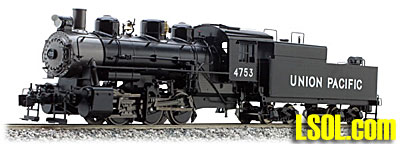 Switchers are not named in the Whyte classification of steam locos, so the 0-6-0 doesn't have a name, but it was built in great quantities beginning in the late1800's. Thousands were built and used by all of the class 1 railroads as the primary switch loco until the introduction of the 0-8-0. Many of the 0-6-0's lasted into the 1950's when all steam was replaced by diesels. The United States Railroad Administration (USRA) came about in 1917 when the US entered World War I and found itself with a railroad system that was unable to support the nation's war needs. There were several reasons that the railroads were unprepared, but in 1915 one-sixth of the railroads were in bankruptcy and a strike by railroad unions in late 1916 led Congress to pass a law mandating an 8-hour work day for railroad workers compounded the other problems faced by railroad management in keeping the railroads solvent. With the entry of the United States into World War I, the Interstate Commerce Commission recommended federal control of all railroads. So on March 21, 1917 the Railroad Administration Act created the USRA and gave control of the railroads to the federal government. One of the things that the USRA did quickly was create a series of common designs for several classes of locomotives and ordered over 100,000 new railroad cars and 1,930 steam locomotives.
As part of that order, 255 0-6-0's were built to a common specification. Since I model the New York Central, I was interested in how many of the USRA designed 0-6-0's found there way to the NYC. I researched in the three of my books on NYC steam locos and found that twelve of those went to the New York Central subsidiary, Chicago Junction. 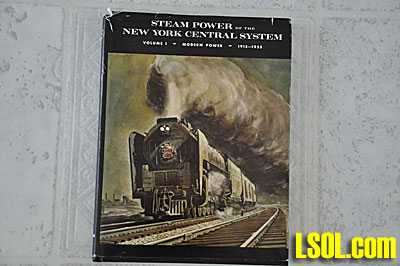
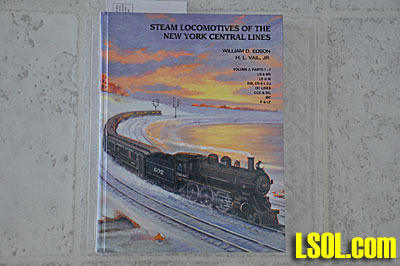 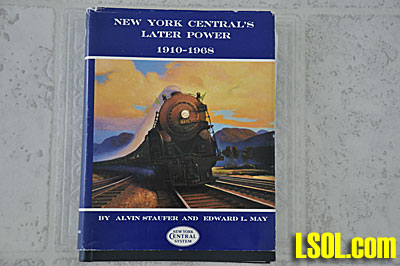 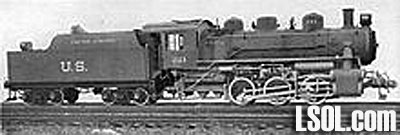
Many railroads continued to build USRA designed 0-6-0's for several years even after the war when the government returned the railroads to private ownership in March 1920. This 0-6-0 is a model of the USRA loco and comes in both electric and live steam versions. It also comes with either a fuel oil or coal tender based upon the road name. It is offered lettered for UP, Burlington, Pennsylvania, Central of New Jersey, UP, CN, B&O, USRA and unlettered. 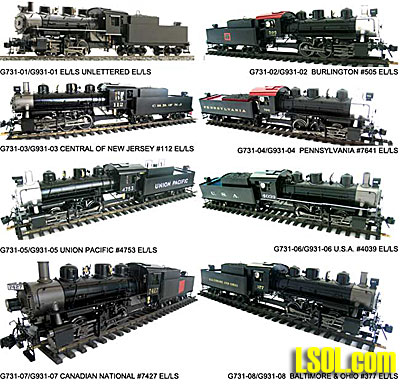 My unlettered loco arrived from the dealer in the standard AML yellow and red box. The box opened to reveal two halves of foam packing containing the locomotive and tender. The tender was wrapped in plastic wrap since the dealer had installed a Phoenix Sound System. The locomotive was packed in a foam wrapper and taped to a wood board. After cutting off the tape I removed the locomotive from the wrapper. All of the parts were attached and both the loco and tender were in perfect shape when removed. There was a small plastic bag containing a nut driver, some screws, nuts and a couple of objects that I haven't been able to identify. 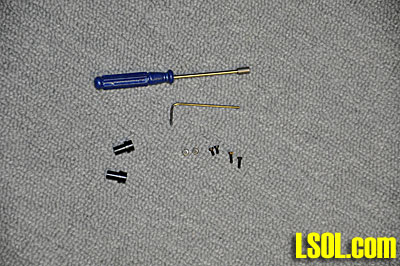
The model is constructed of brass and stainless steel. It is configured to look as it would have looked in the post-war era. It is powered by a large gearhead motor that powers all six drivers. It has power pickup on 12 pickup wheels that allows for smooth operation on all types of track. It has operating steel drive rods, valve gear and cross heads. The detailing includes boiler fittings, domes pipes and handrails. It is 1/29 scale, 30 inches long, 4 1/4" wide and 6" high. It requires a minimum radius of 30". It has considerable overhang (3") so care must be taken to ensure clearance before running on your railroad. 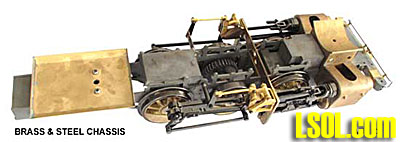 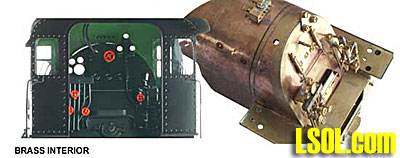 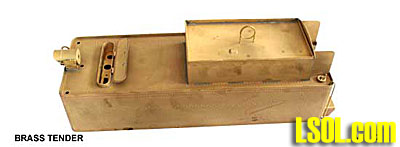 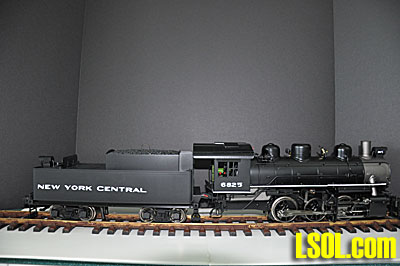 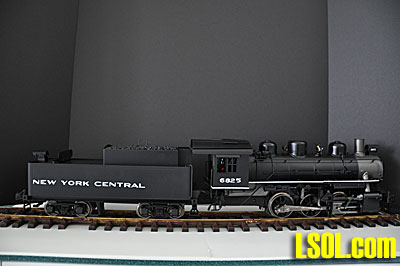 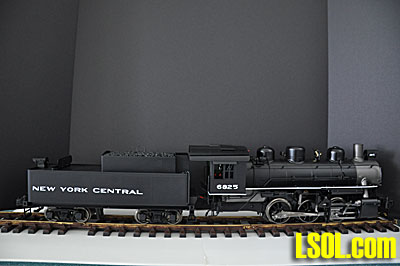
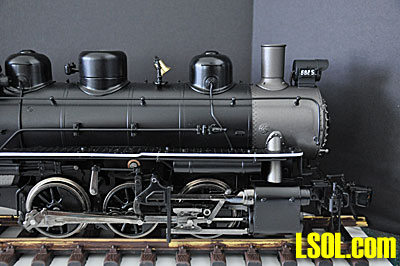 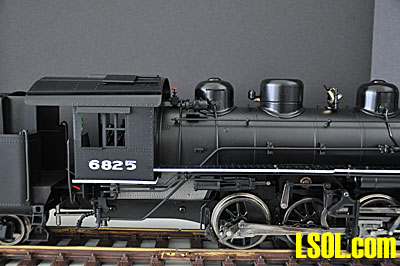 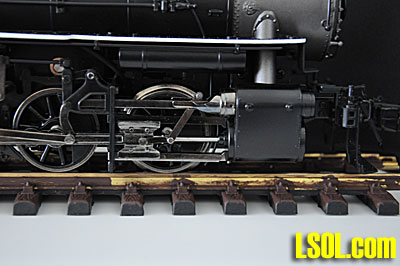 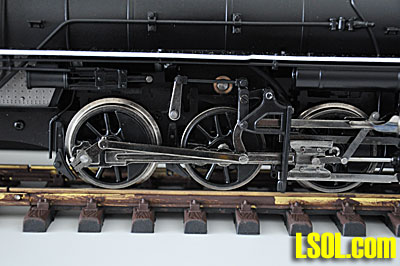 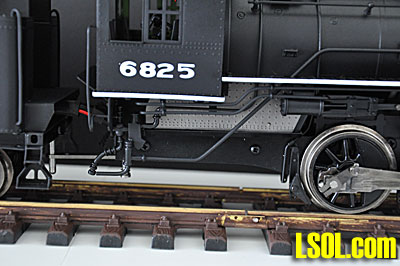
The locomotive is nicely done with a lot of cast on and added detail. The front of the loco has excellent detail including a hinged smokebox front that allows access to the inside of the loco. There are highly detailed double bar steps; a brake hose, coupler lift levers and an oversized AMS knuckle coupler. The headlight uses a very bright white LED and it is visible from a long distance. You can see the level of detail in these pictures and the difference between the locomotive before and after weathering. 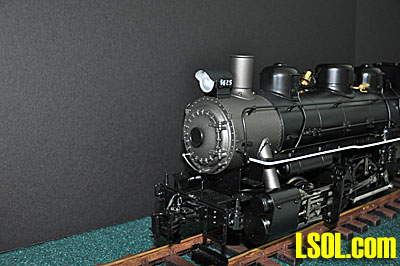 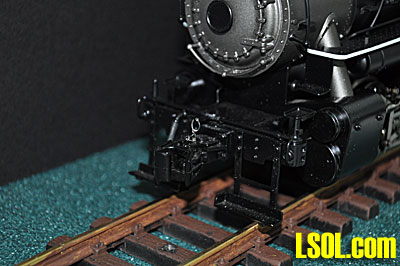 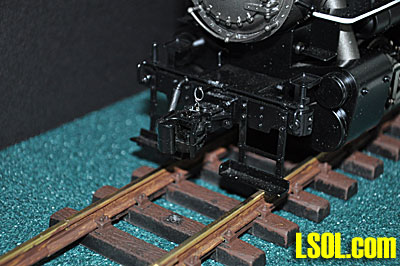 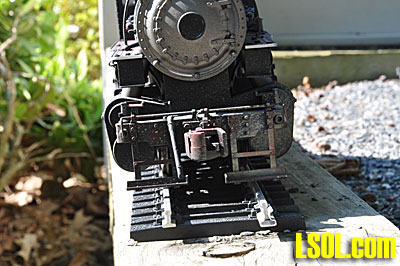 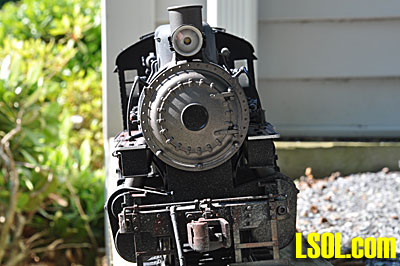 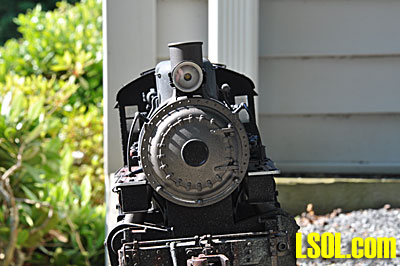
The top of the loco reveals the sliding hatches in the cab, the bell, whistle, generator, domes and stack. You can also see the headlight, boiler bands and rivet detail in these photos. Again, you can see the contrast between the un-weathered and weathered versions in these photos. 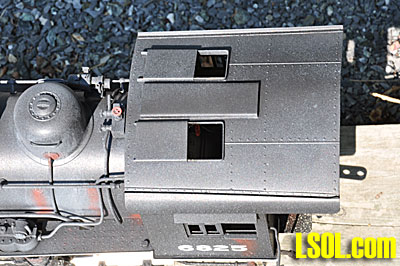 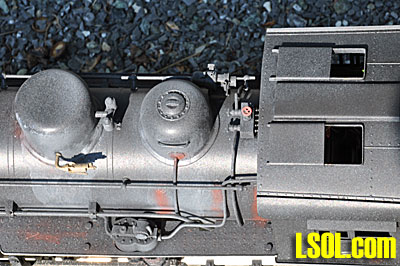 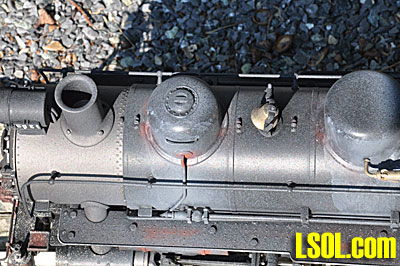 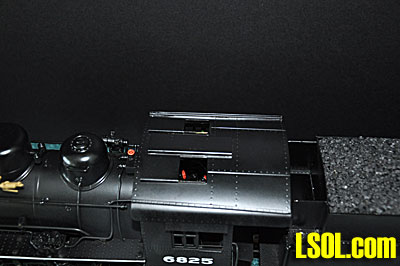 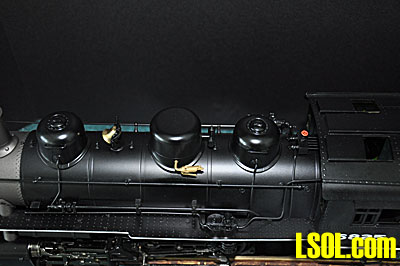 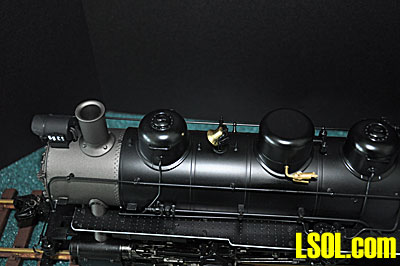
The side views show the difference between the engineer's side and the fireman's side of the loco and again the difference in the un-weathered and weathered versions are evident. 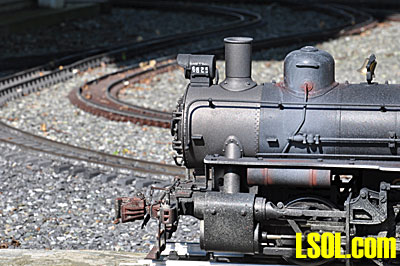 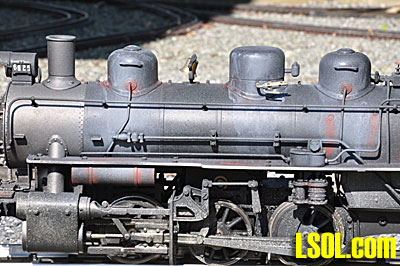 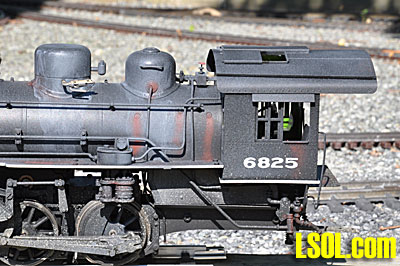 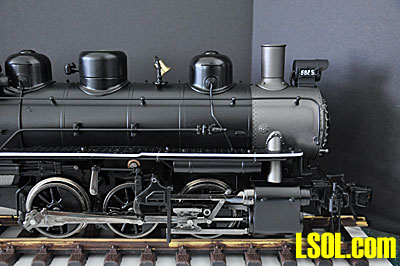
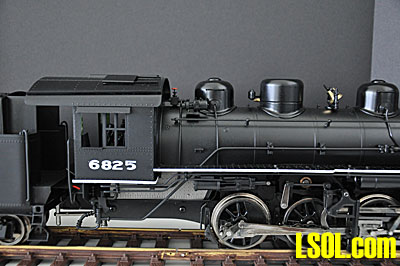 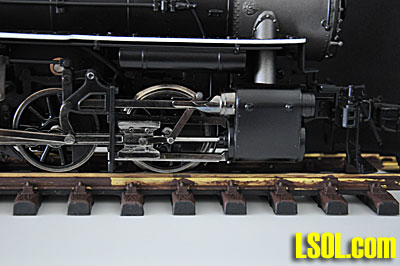 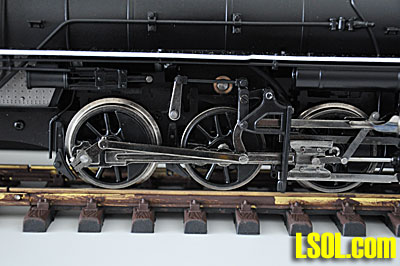 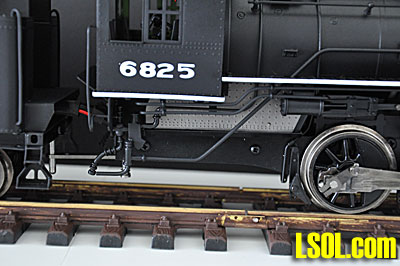 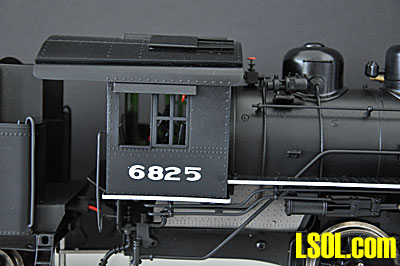
The interior of the loco is very well finished with all of the valves, knobs, pipes and handles found in the real locomotive. You can see the firedoors, engineer's and fireman's seats. The windows slide open and shut and the floor is detailed just like the real loco. 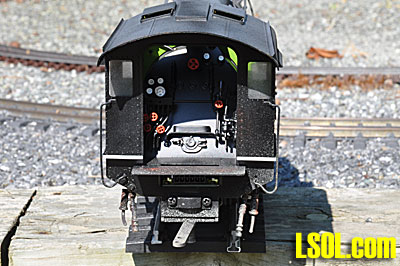 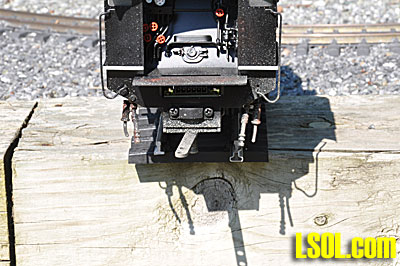 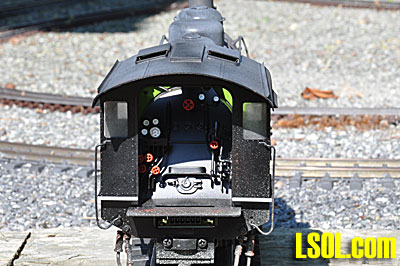
There is a 12-pin plug between the loco and tender that carries all of the electrical connections between the two. It has a standard metal drawbar to connect the tender to the locomotive. Both loco and tender have carbon brush pickups for the wheels on both rails for track power. The locomotive has a unique pickup that controls the chuffs for the sounds system. It consists of a drum with two spring wires fixed into grooves on the drum. This produces an authentic four chuff per revolution not found on most Large Scale locomotives today. 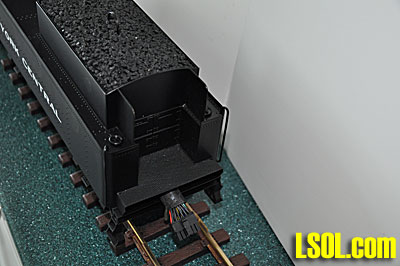 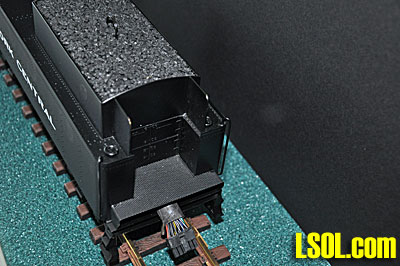 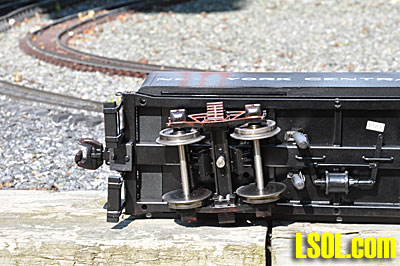  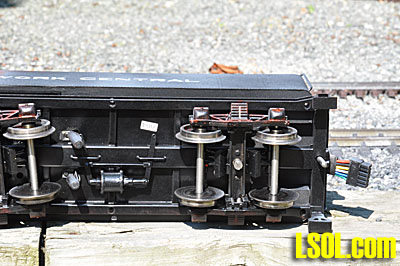
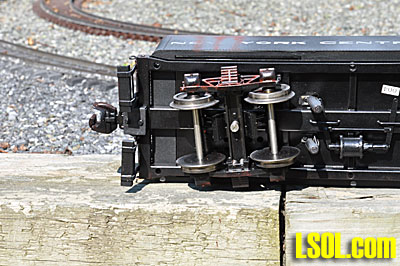 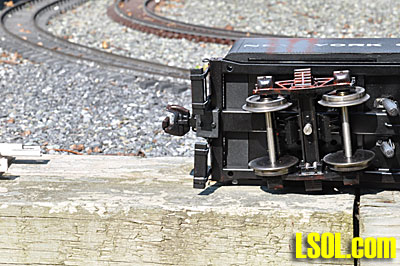 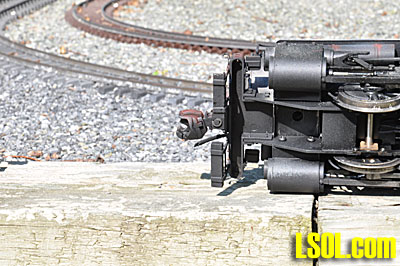 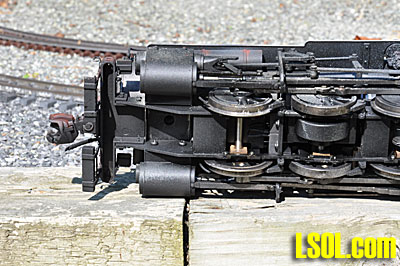
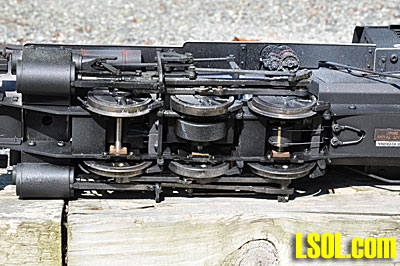 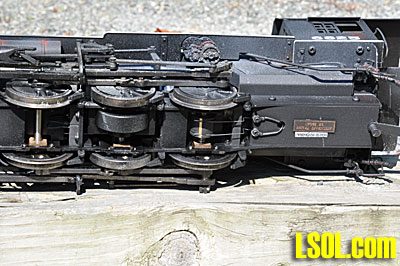 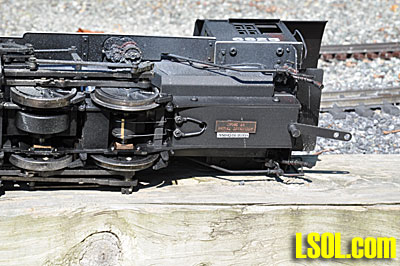 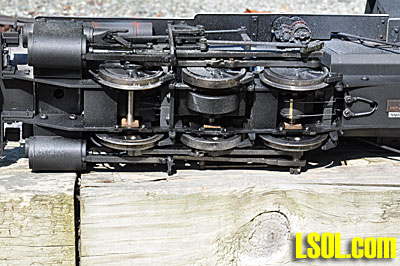
The tender is a beautiful model and the undecorated version has high sides for the coal space. The rivet detail, double bar tender steps, ladder, light, coupler lift bars, water tank filler cap and coal load are all excellent. The coal doors are molded in, but appear very authentic. The floor sheet on the back of the tender is excellent. The light on the tender is a white LED that is very bright. The coal load has a small loop molded into it to allow easy removal of the coal for access into the tender. The loop distracts from the authenticity but is extremely useful for those of us who have had other tenders that require a lot of effort to get the coal load out for access. 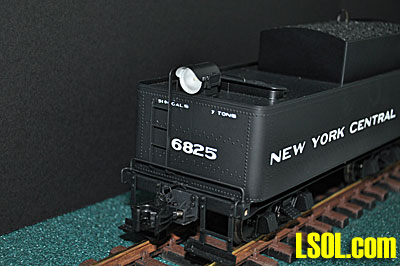 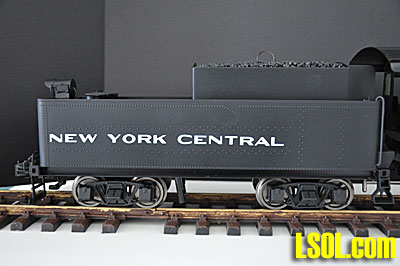 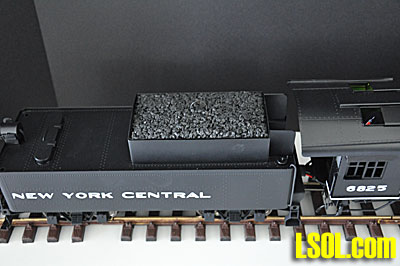 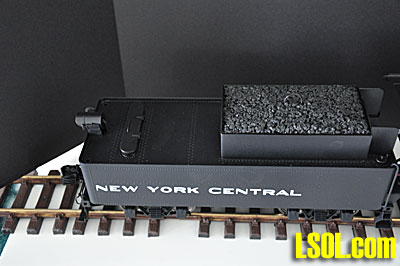 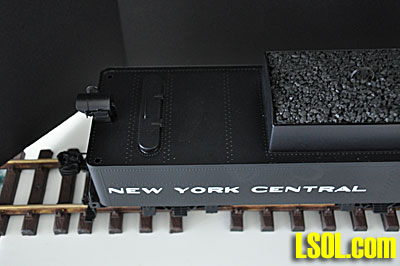
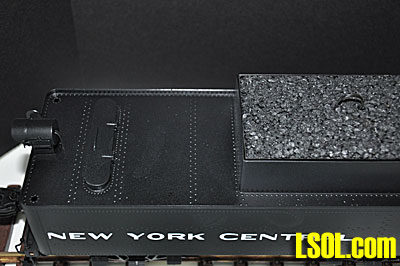 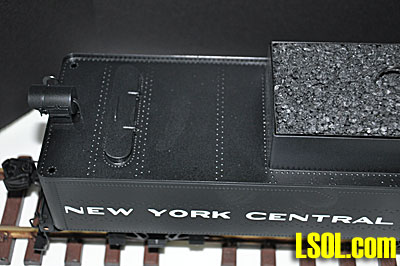 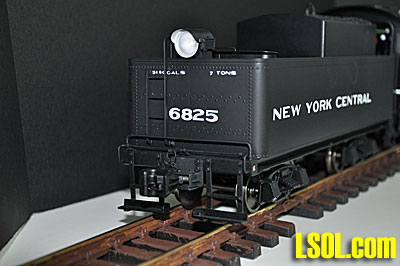 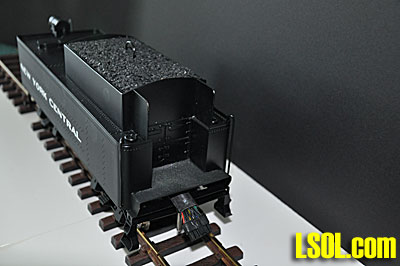 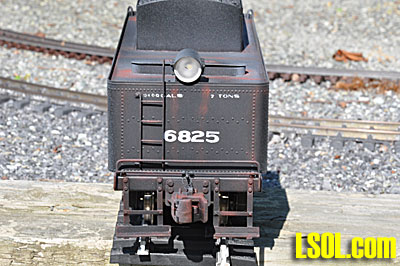
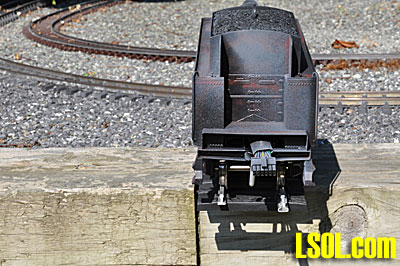 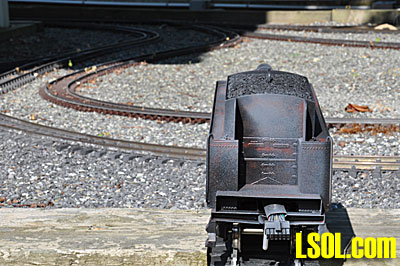 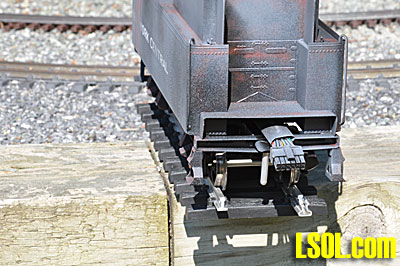 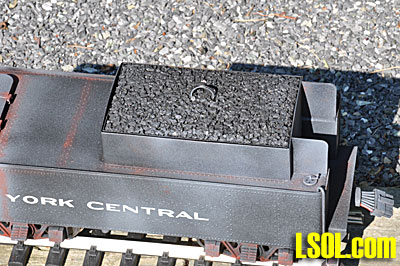 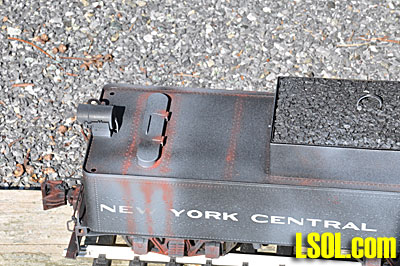 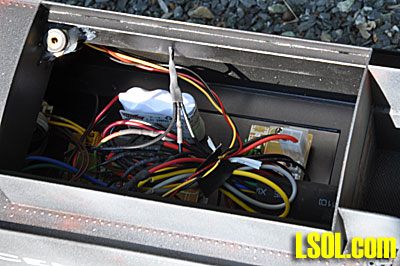
The AMS G scale couplers look very oversized for the 1/29 locomotive and tender. They are mounted at the correct height, and couple with the #1 scale Kadee couplers on my rolling stock. They do not remain coupled in turns since the AMS coupler is very stiff and oversized for the #1 scale Kadee. Checking with Sam Clark at Kadee revealed that the correct Kadees in G scale would be #835 or # 789 in the old style and #901 in the new style couplers. In #1 scale the loco and tender would require #1835 or #1789 in the old style and the new version is not yet available. Since I had several of the new Kadee 901's I used those to replace the AMS couplers. They went into the AMS coupler box like they were made for them and when I tried them out pulling my 10 car freight train, they worked perfectly and did not come apart on the curves like the AMS ones did. 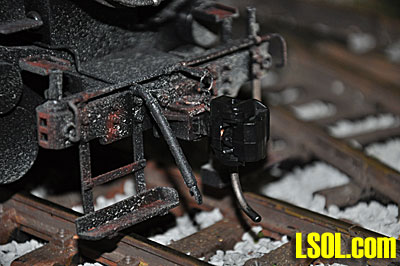 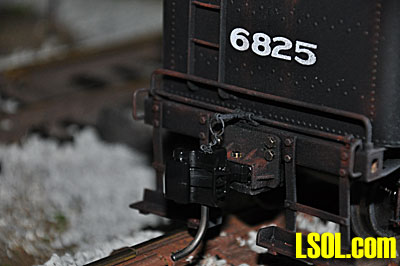
The wheel gauge for the locomotive measured 1.750 on all driving wheels and 1.747 on the tender wheels. The NMRA standard is 1.575. I had no problems with the loco and tender operating on my indoor railroad. The locomotive pulled 9 freight cars and a caboose with little trouble. It had no problems with any of the turnouts or curves, although it seems to loose a little power on the curves. The loco ran very smoothly from start up to full speed with that 10-car train. 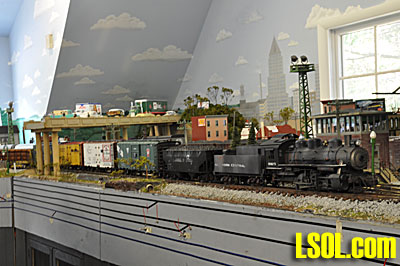 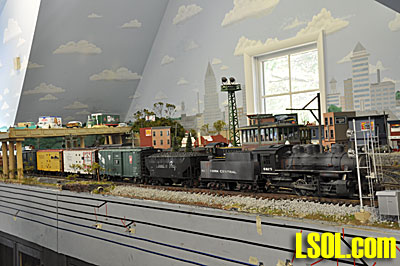 There is no fireman or engineer included with the loco and that is true of all AMS and AML locomotives. I am looking for a suitable set in 1/29 for my 0-6-0.
As you have seen, I lettered the loco and tender using New York Central dry transfers from CDS in Canada. CDS Website
The lettering came out very nicely and is authentic for 1954, the year my railroad is modeled. 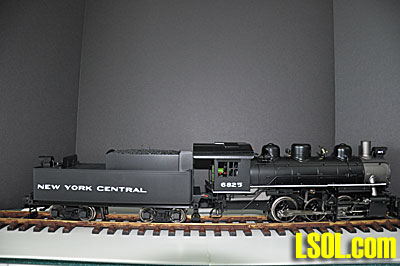 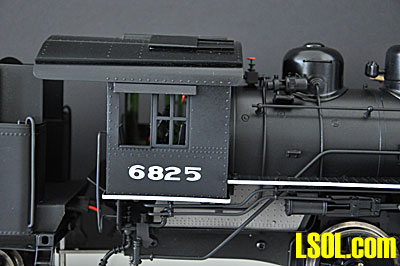 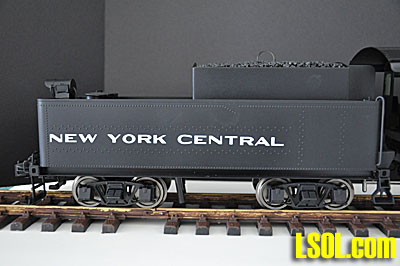 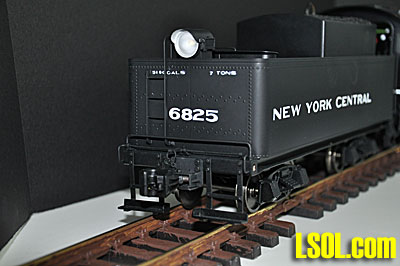
I weathered the engine with weathering powders and spray can paint following the techniques that I have developed over the years. I used an article in the August 2002 Model Railroader by John Pryke, titled "Realistic Weathering of Steam Locomotives" that I found to be a very good primmer for weathering steam locos. Since I only do about one of these every couple of years, I find it a good practice to review the article before I begin. I did some pretty extensive weathering on this loco since by 1954 most of the 0-6-0's were pretty run down on the NYC. 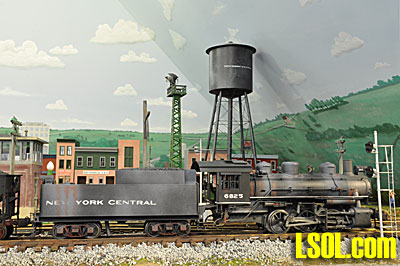 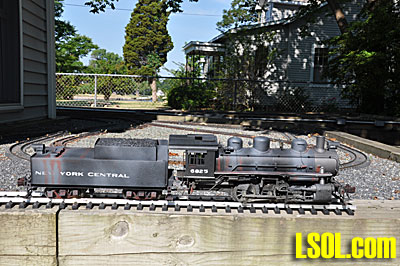 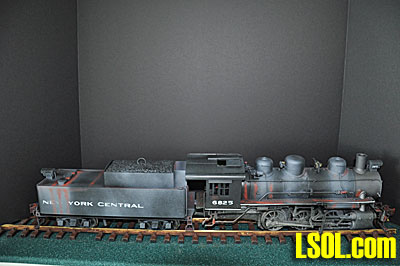 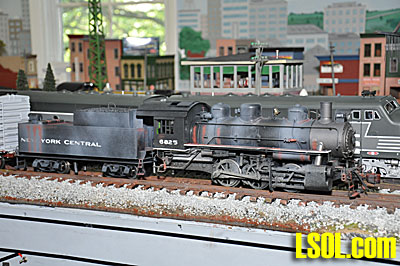
The Phoenix Sound System is very authentic sounding with start up sounds, coal shoveling, blow down, correct whistle signals, bell and chuff. As the loco decelerates, the brake squeal, bell and whistle sound very nice. The four chuffs per revolution are authentic and unique, making the sound very prototypical. I have Phoenix Sound Systems in all of my locomotives and believe that they add a dimension to the hobby that is hard to imagine going without. 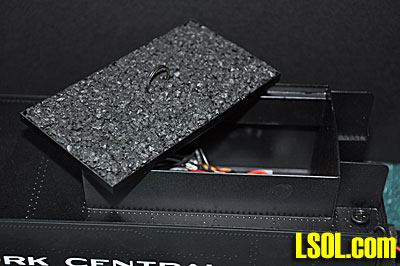 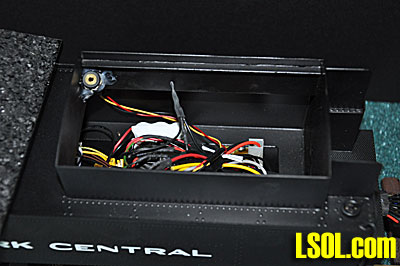
This AML electric USRA 0-6-0 is a welcome addition to the limited number of steam locomotives available in standard gauge Large Scale. It is as beautifully done as the last AML loco, the PRR K-4 Pacific, which I also have. It is a heavy loco and has great pulling power for a switcher. There are very few of them currently available from dealers, but there are a few left. The electric version retails for $899 and the live steam version for $1319. The Phoenix Sounds System adds another $250. I am using the switcher to switch freight cars and pull short freights on my indoor NYC railroad and I think it looks and sounds very authentic. Since there are so few steam locomotives available to us, if you haven't purchased a steam loco for your railroad in a while, you should give some serious thought to buying one of these beauties. 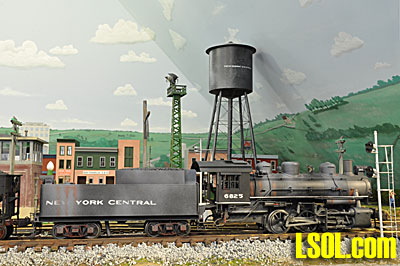 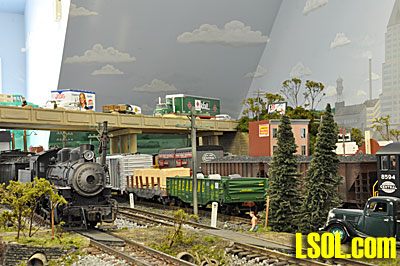 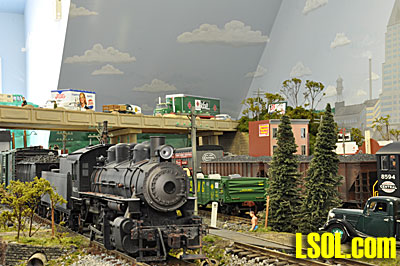 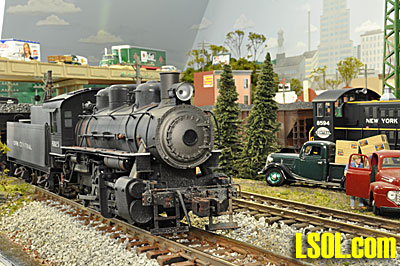
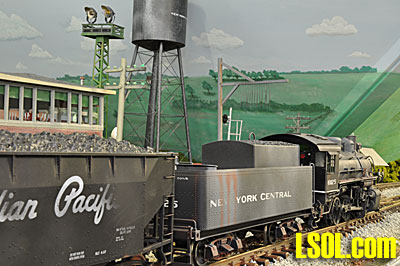 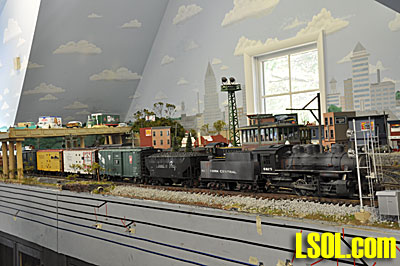 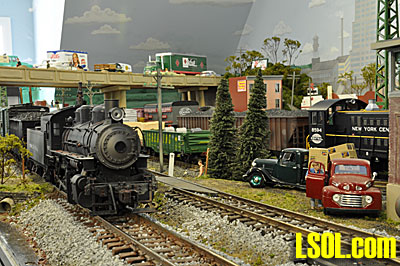 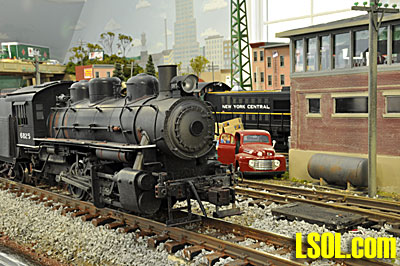 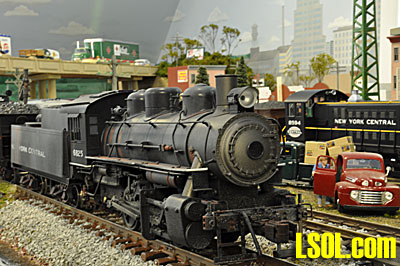
| 0-6-0 Review |
| Excellent review. The "history" lesson at the first part of the review is well done and informative. Great weathering job. |
| JD Miller - 07/21/2010 - 06:24 |
| 0-6-0 |
| Very interesting article. |
| Dave Zinsner - 07/21/2010 - 07:44 |
| 0-6-0 Review |
| Great job on review and weathering. Looks like a real winner. |
| Jim O'Connor - 07/21/2010 - 07:51 |
| 0-6-0 |
| I would like to be able to run this on both electric and battery power and I believe this should be included ready to run . |
| Raymond Abbott - 07/21/2010 - 09:40 |
| 0-6-0 review |
| Great article Noel. Your weathering of it makes it so real looking. |
| Gary Condry - 07/21/2010 - 10:05 |
| Neil's 060 |
| WOW Neil what a great presentationm of the 060. The history is very intereesting and the weathering look real. You always do a real fine job giveing a presintation Thanks. |
| Roger Fitzjarralkd - 07/21/2010 - 13:40 |
| Noel's 0-6-0 |
| Thanks for all of the kind words. Makes writing these articles worthwhile. Accucraft AML has a real winner with this loco. I sure hope they keep coming up with new ones. Their K-4 Pacific and this one are both outstanding models. Noel |
| Noel Widdifield - 07/22/2010 - 13:09 |
Top of Page
|



